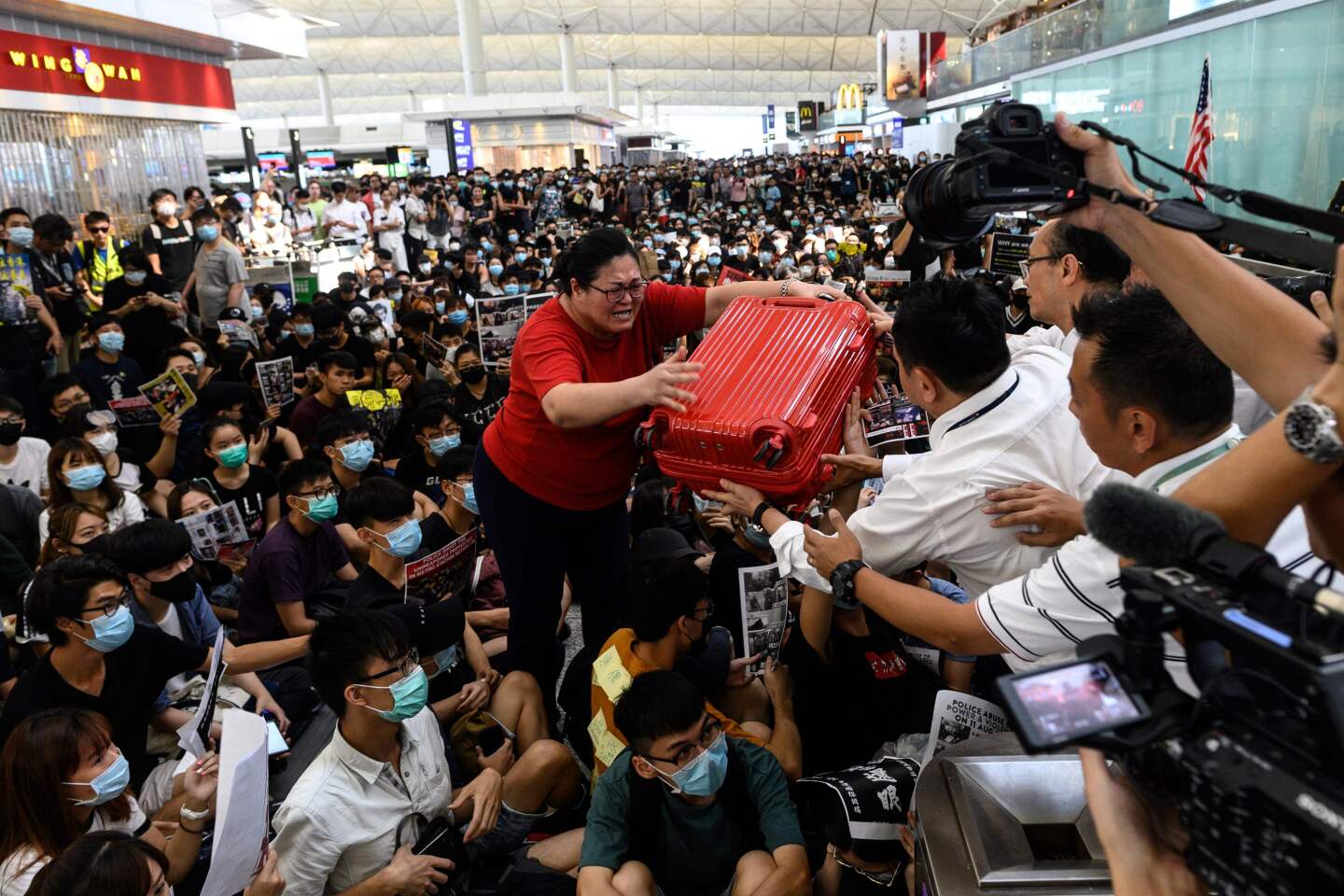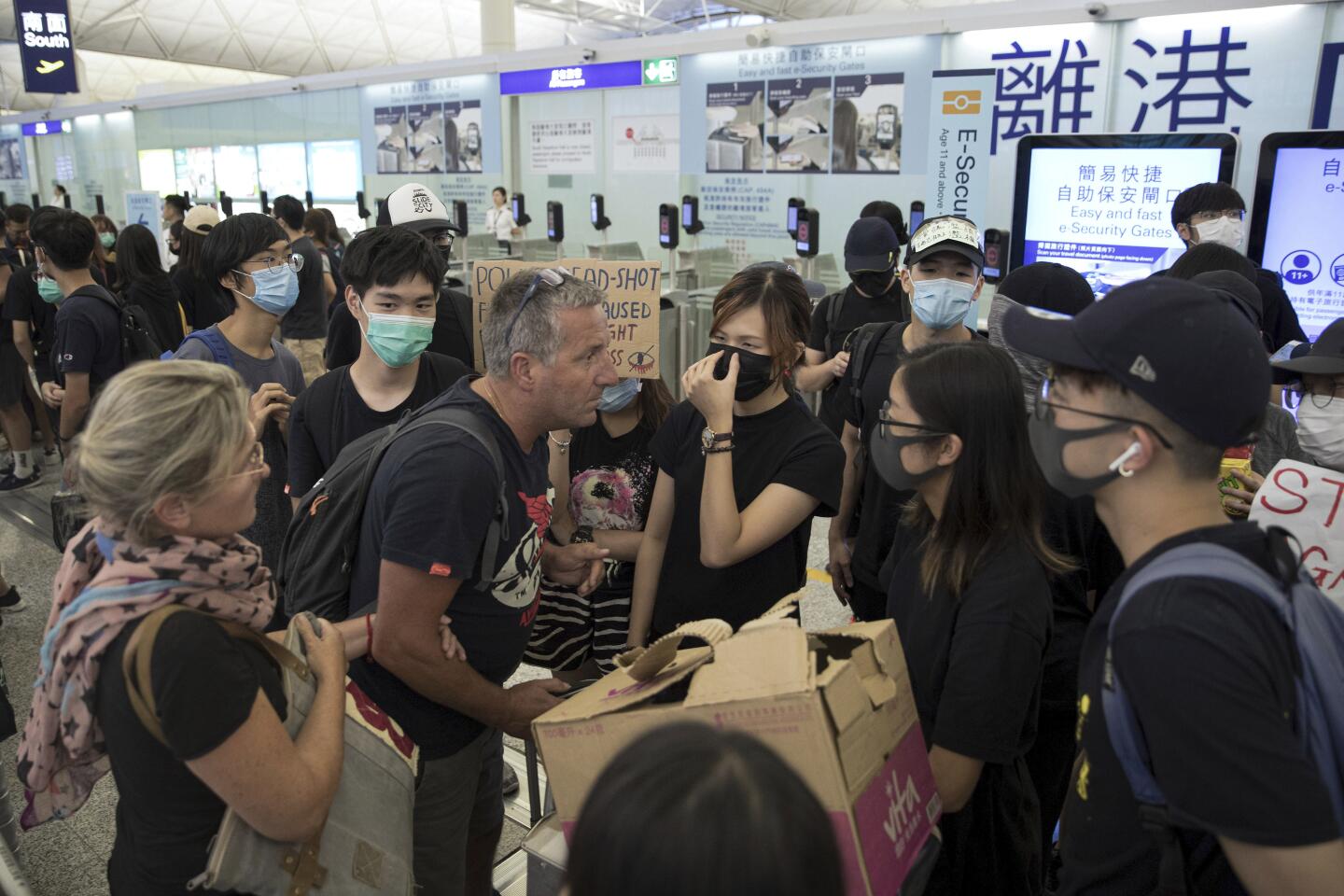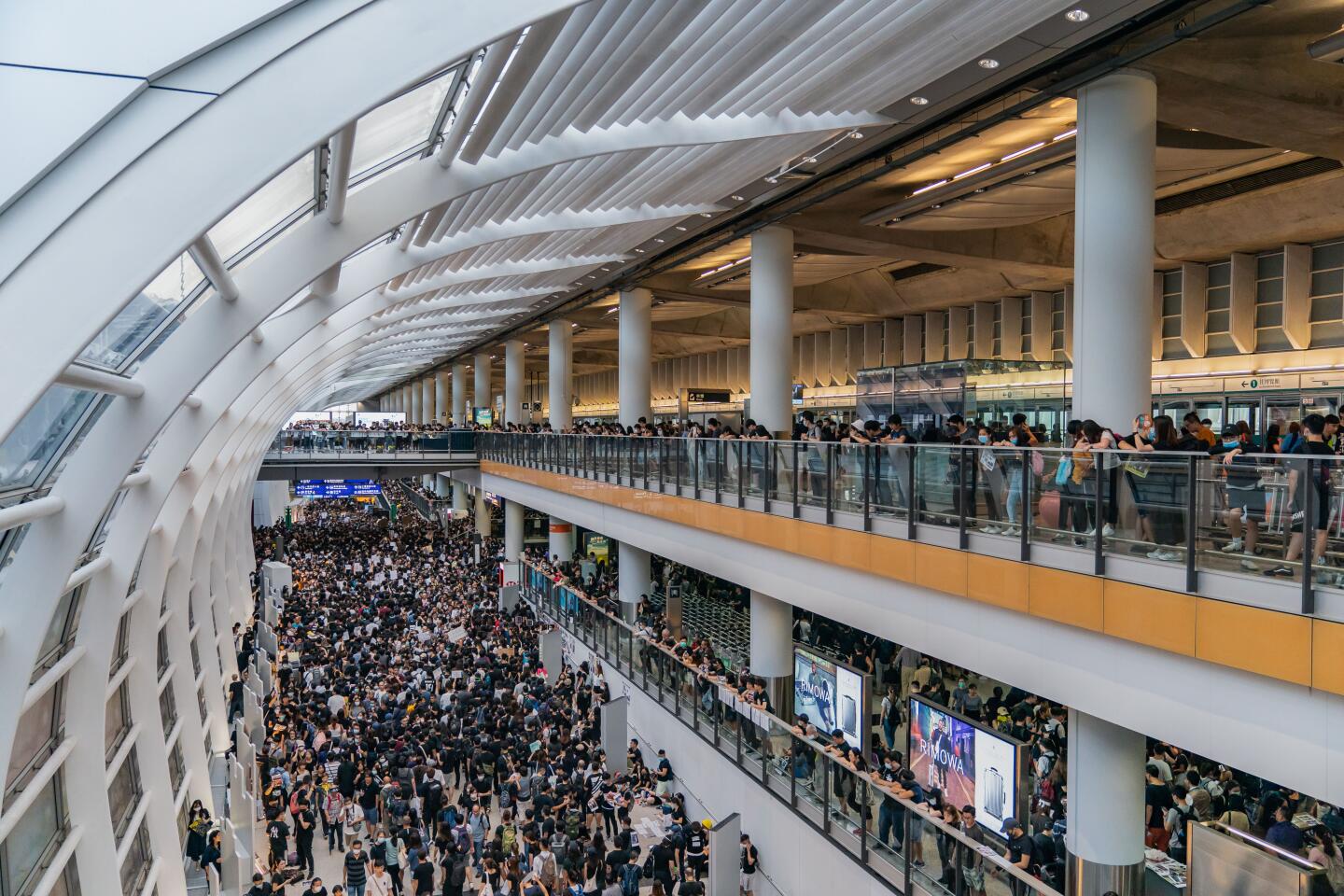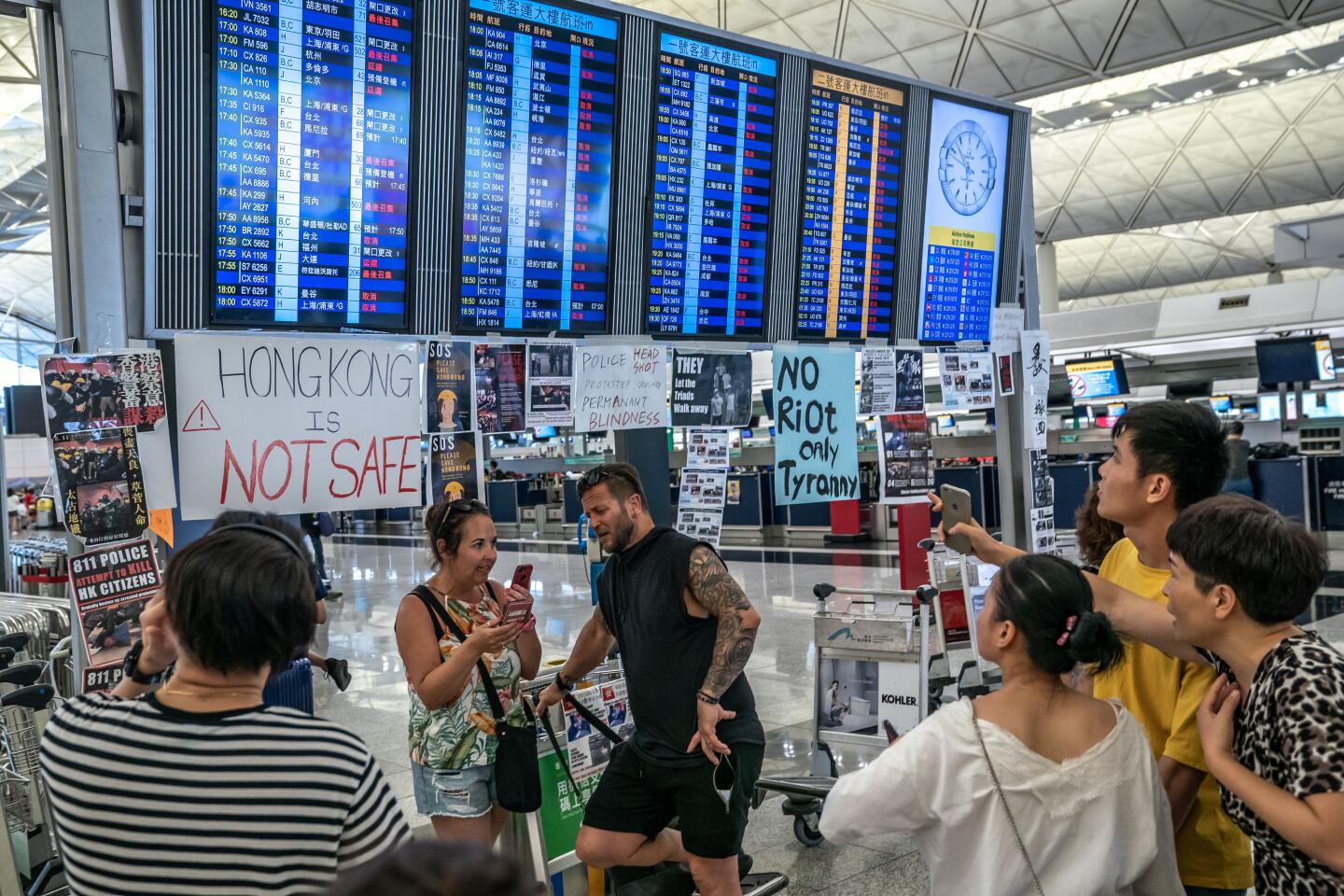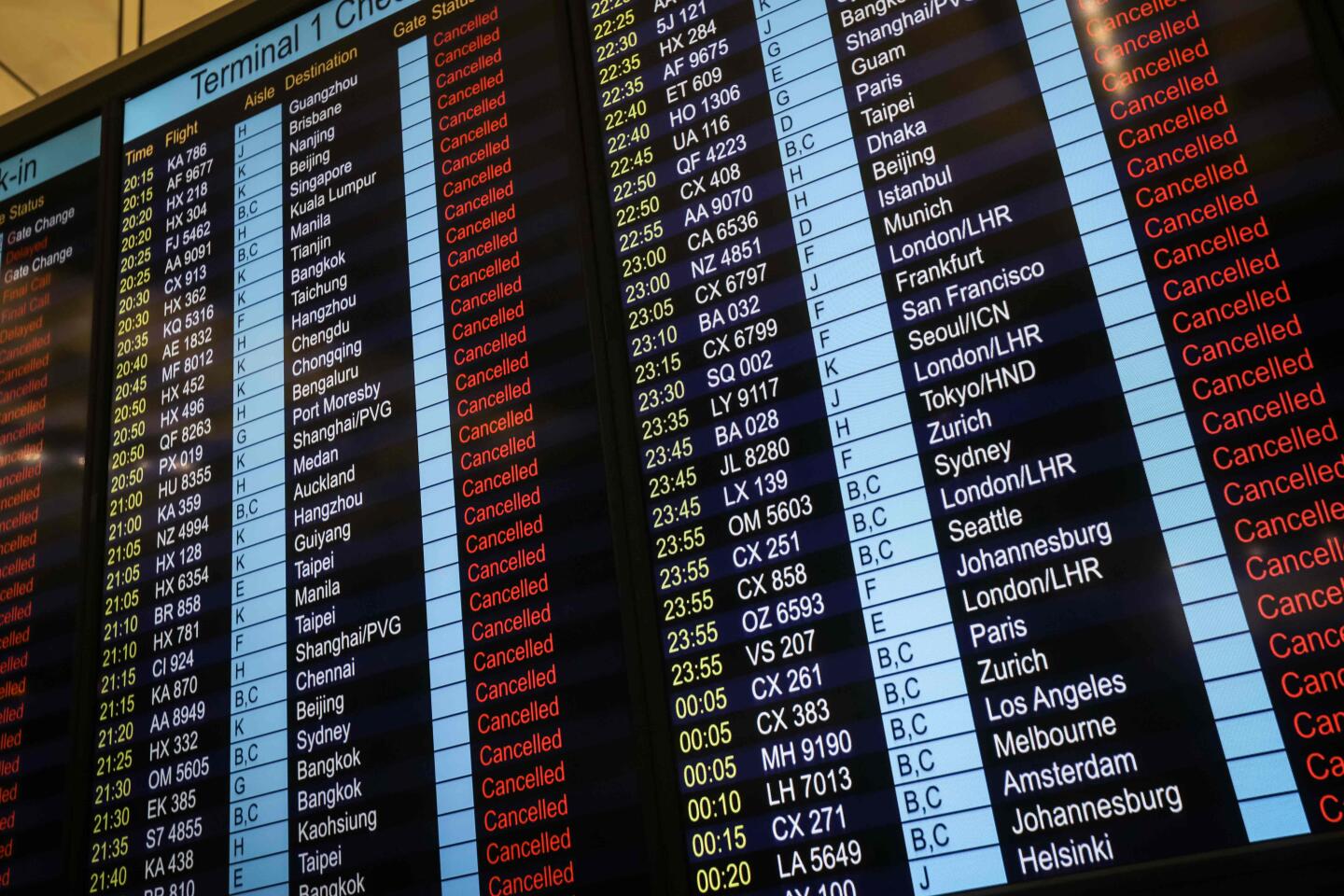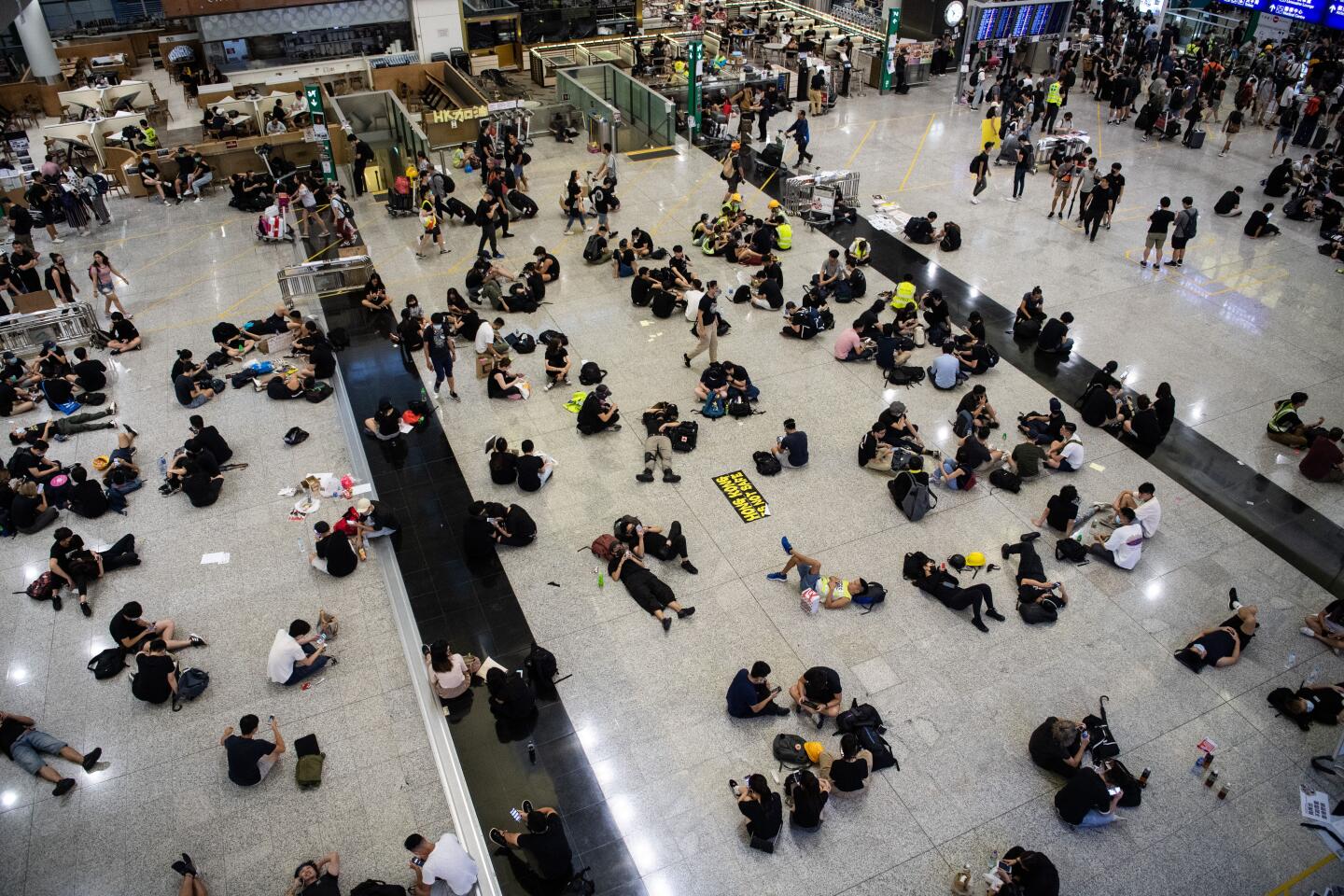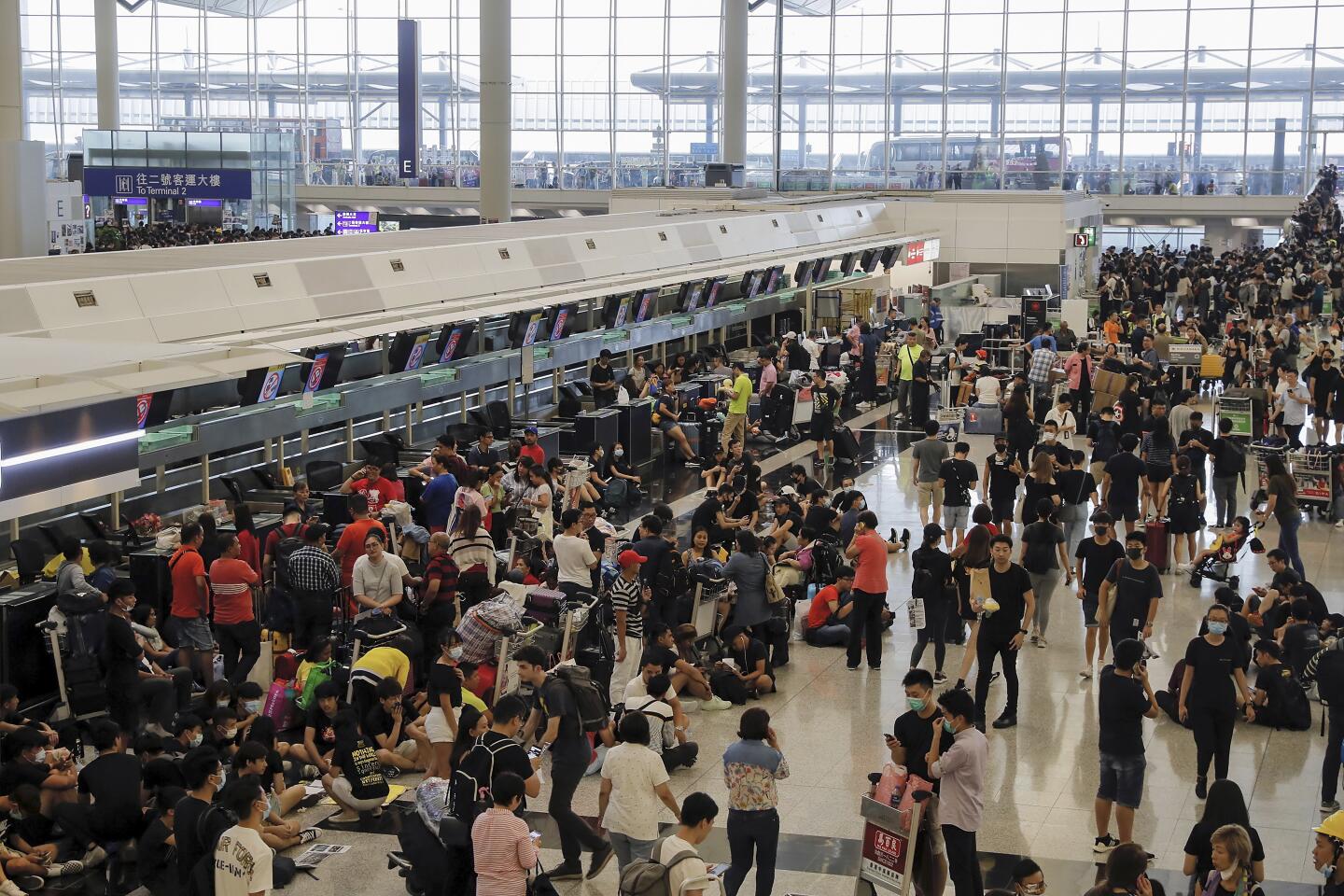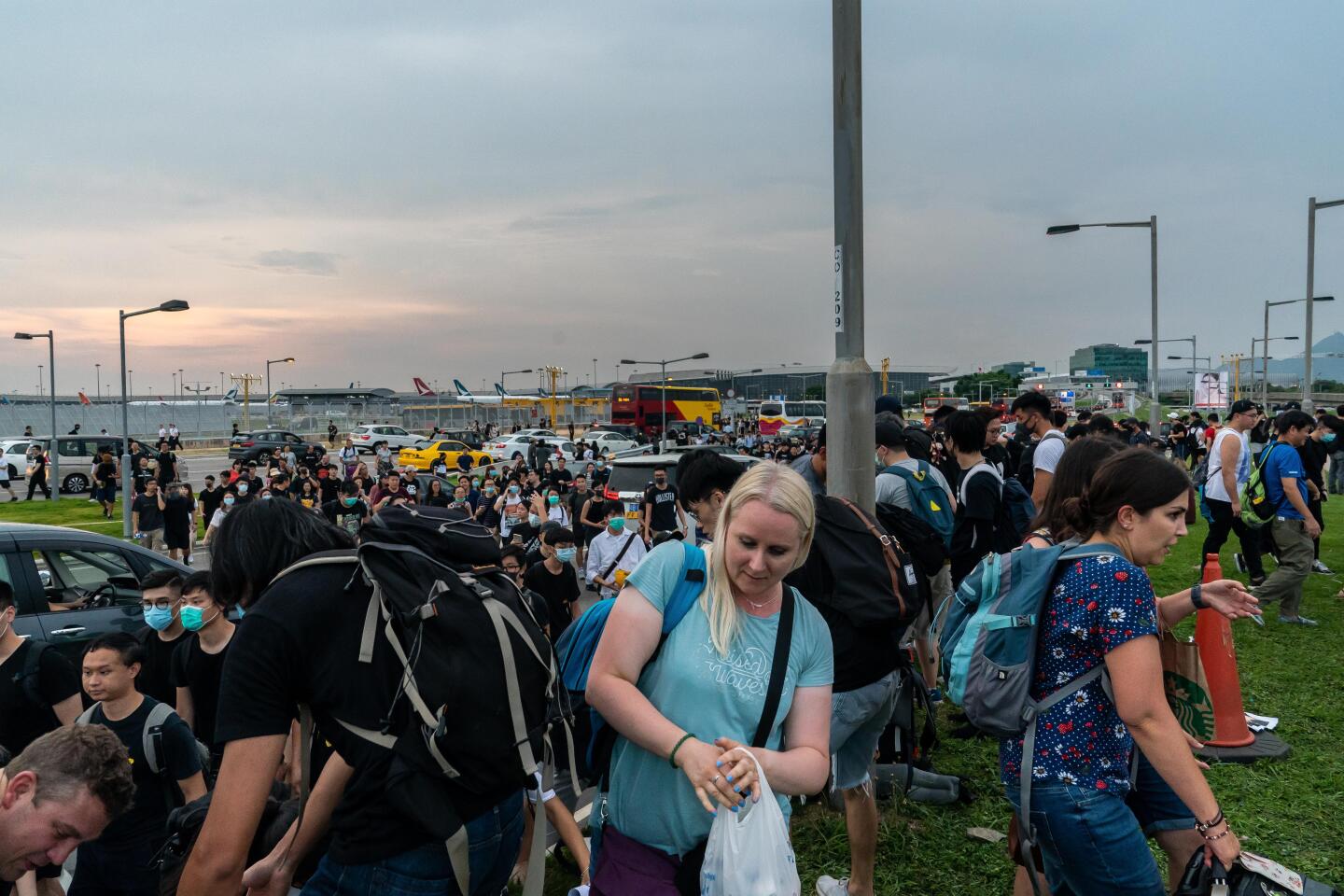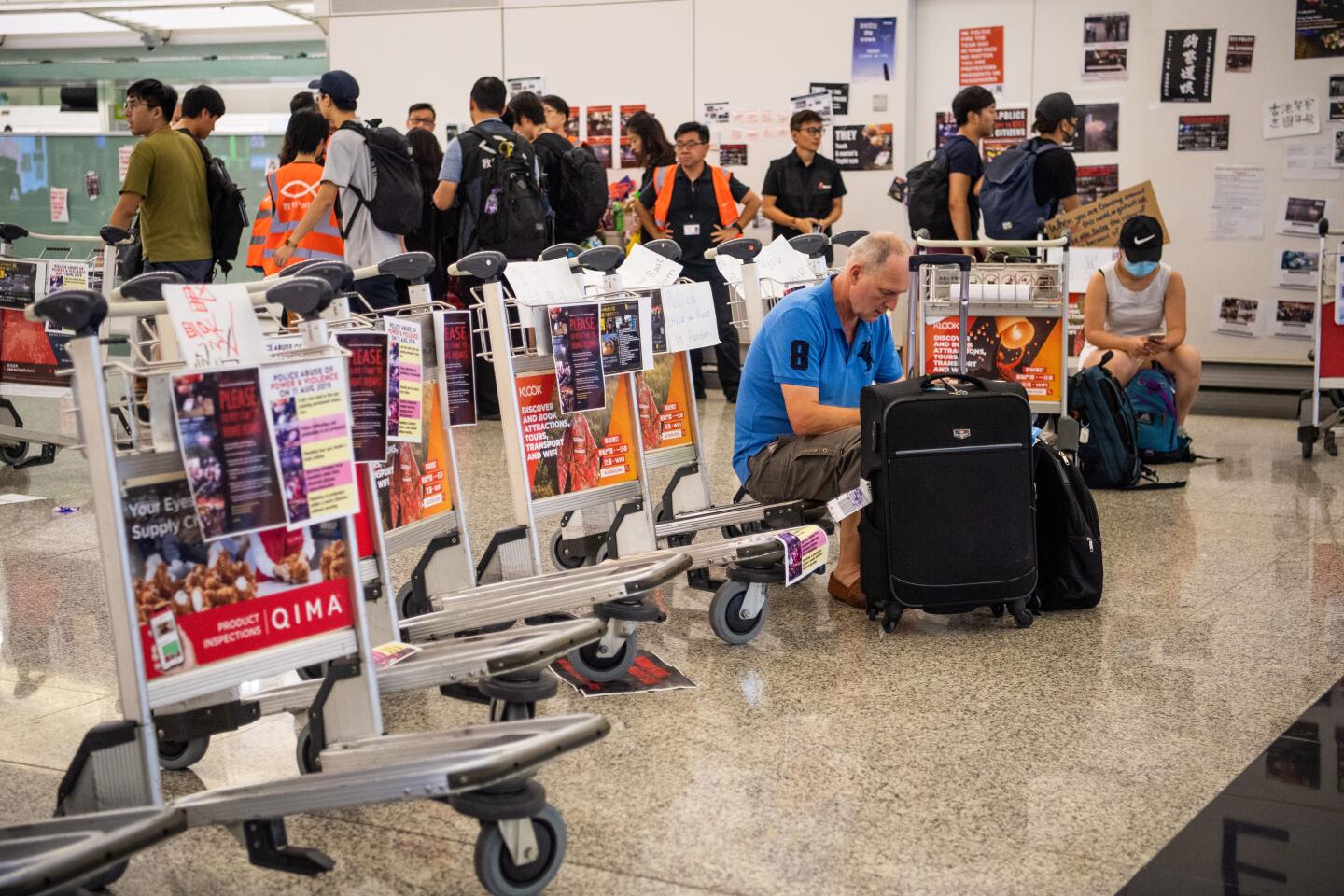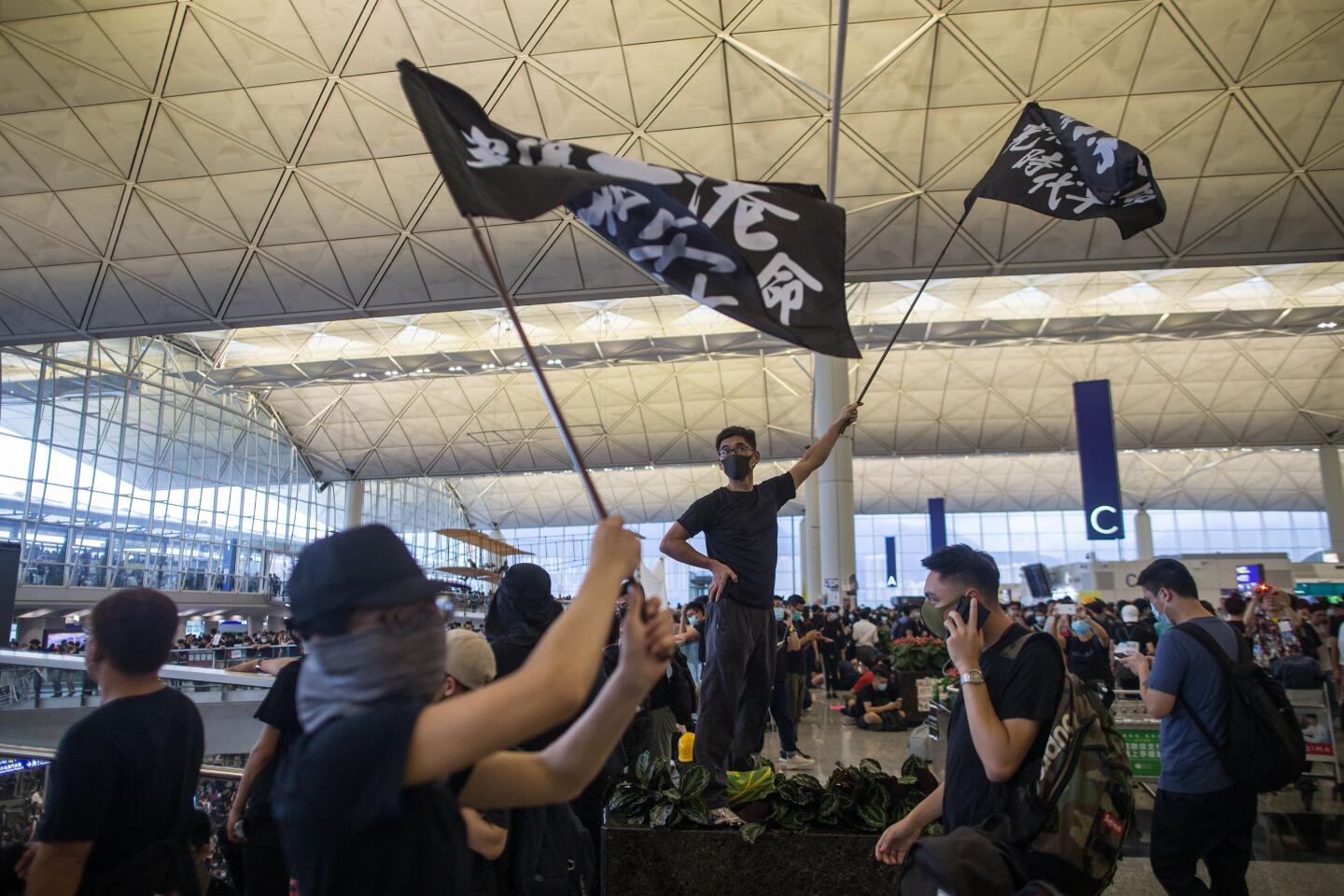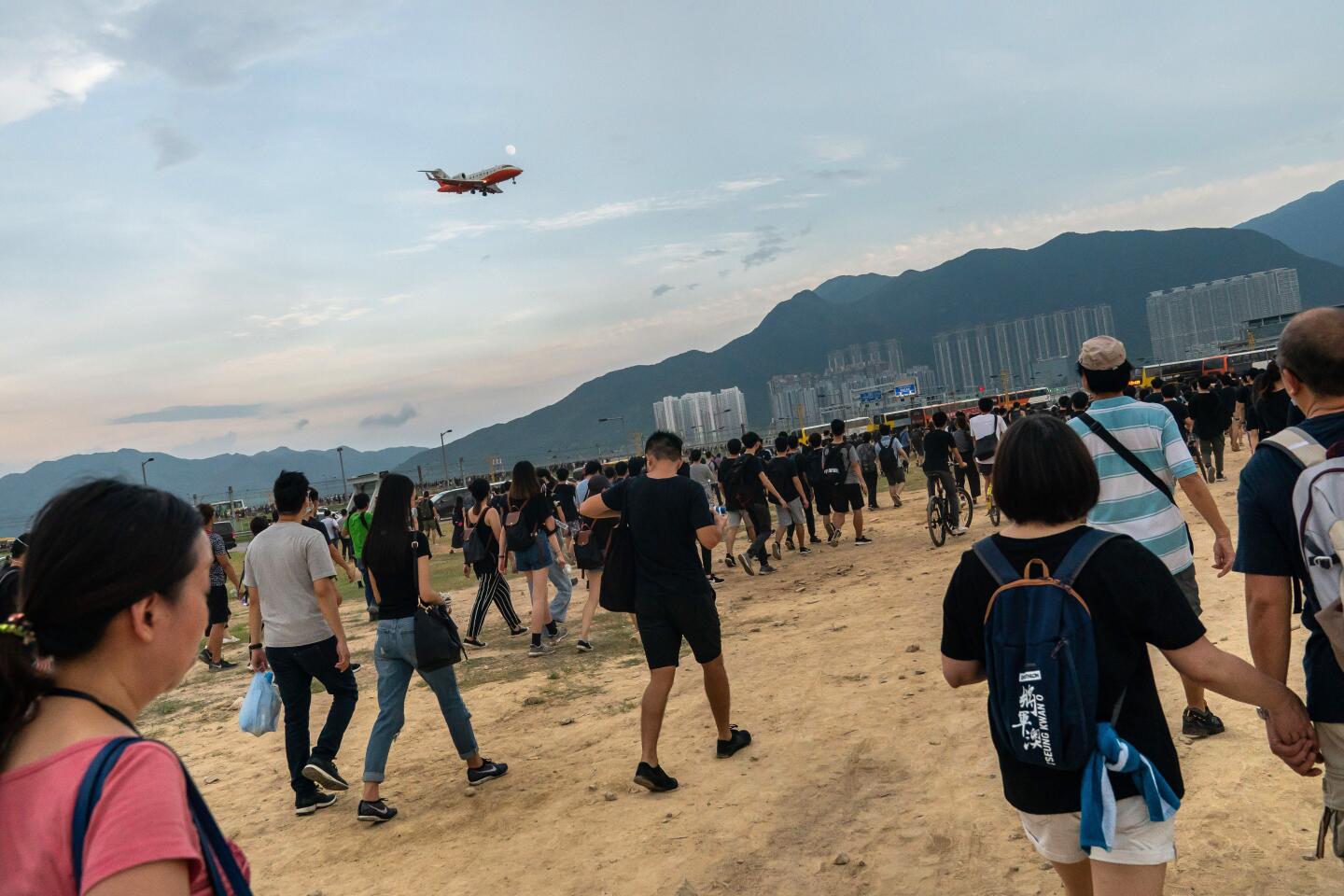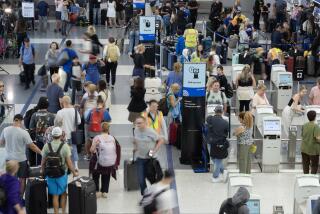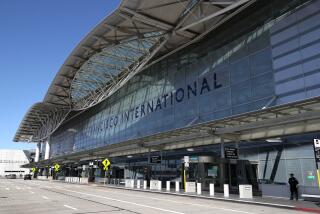Flights resume at Hong Kong airport after protests lead to chaos
- Share via
HONG KONG — Chaos consumed Hong Kong’s international airport Tuesday as formerly peaceful pro-democracy protests took a turn toward vigilantism.
Thousands of protesters blocked passengers and occupied terminals, forcing the airport to suspend all check-ins for the second day in a row, later clashing with riot police and attacking suspected undercover cops in their midst. President Trump warned in a tweet that the Chinese government was moving troops to its border with Hong Kong, which enjoys limited autonomy.
More than 300 flights had already been canceled Tuesday following Monday’s airport shutdown due to a similar protest. By Wednesday morning, however, only about three dozen protesters remained camped out at the airport, and flights were resuming, the Associated Press reported.
Hong Kong is in its 10th week of public unrest. What started as a peaceful movement against an extradition bill perceived to threaten Hong Kong’s rule of law has become a decentralized series of near-daily confrontations between protesters and police. More than 700 protesters have been arrested so far.
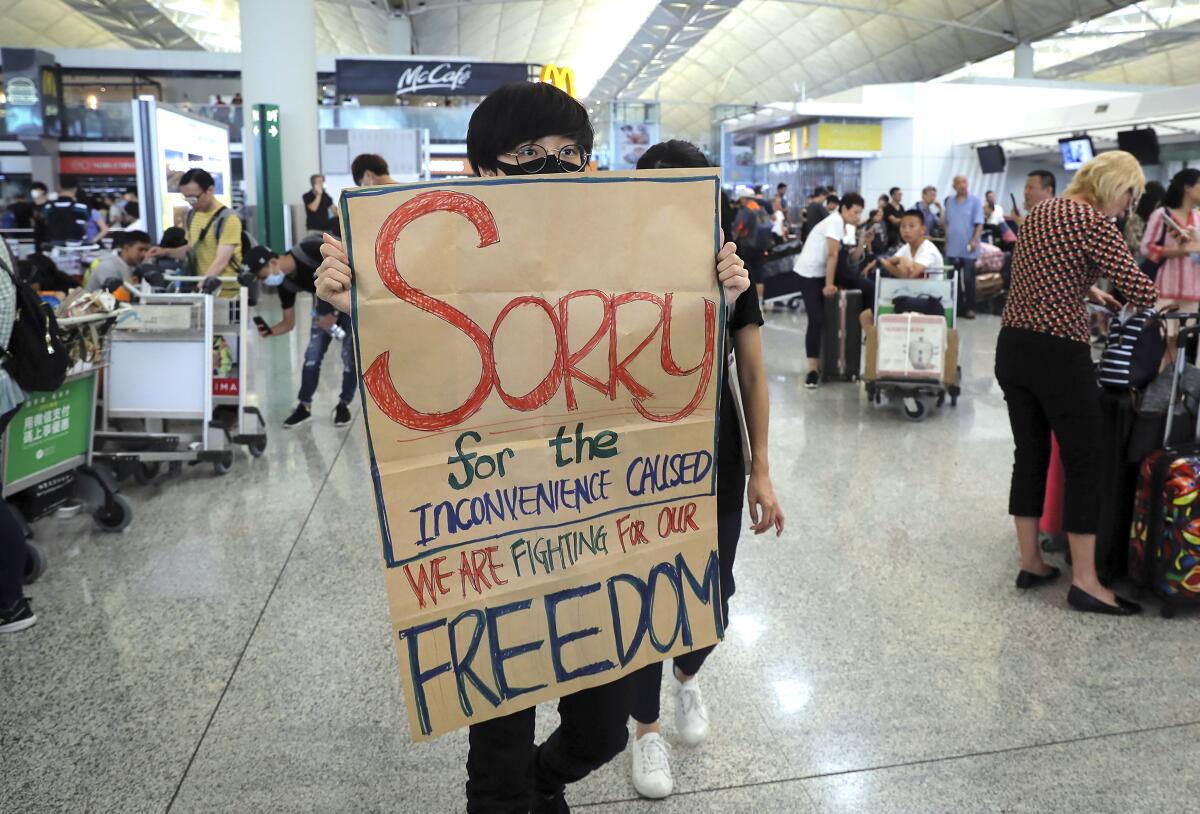
The international airport, one of Asia’s top transportation hubs and a symbol of Hong Kong’s status as a financial center, has been a focal site for protesters, who’ve been trying to raise awareness of their fight for democratic reforms and against alleged police brutality.
“We are afraid this could turn public opinion against us, but we are desperate and we are sorry.”
— Edgar, a 17-year-old protester who refused to give his last name
But this time, protesters shifted from the peaceful tactics they’d been using the previous four days, escalating from chanting and handing out fliers to physically obstructing passengers from reaching their flights. Their methods may have antagonized the international visitors they were trying to win over, just as Beijing escalates a propaganda war aimed at portraying the protesters as “radicals” under foreign influence and deserving of a crackdown.
Angry scuffles broke out in the late afternoon as hundreds of protesters surrounded two security gates in one of the terminals, sitting down so that no travelers could get to the security check and their boarding gates.
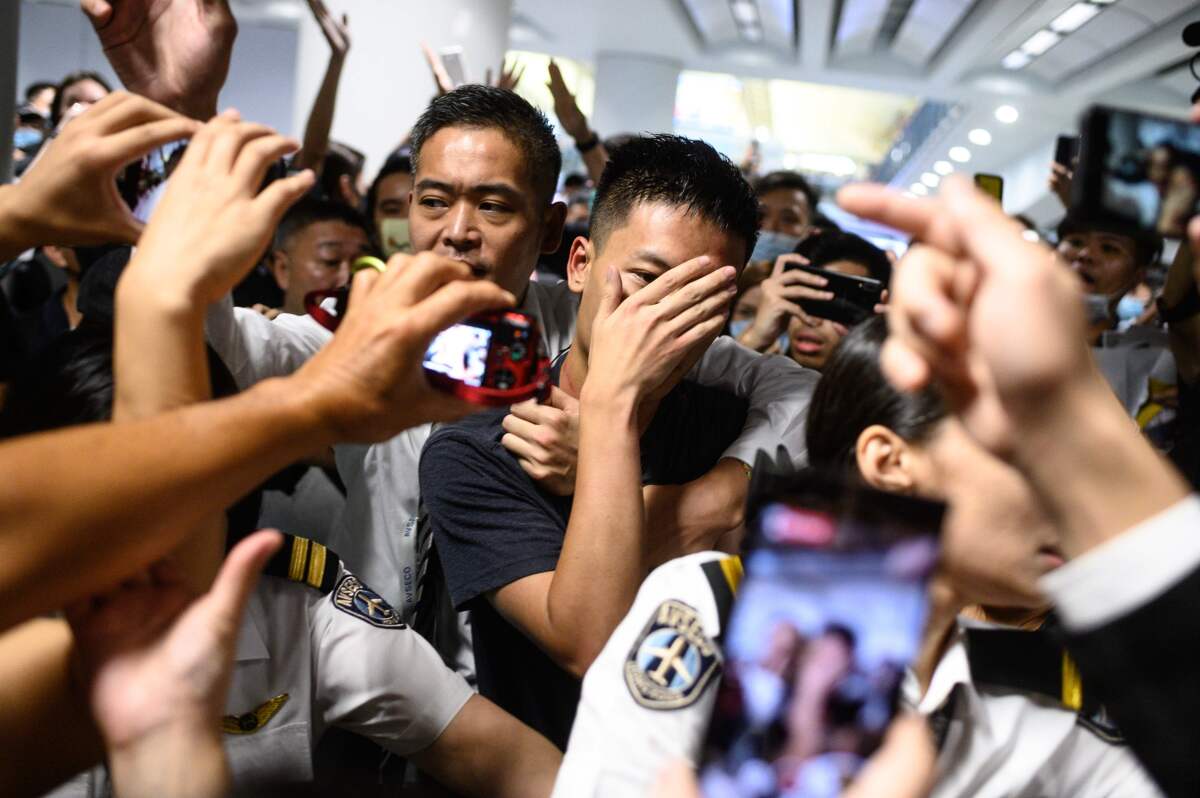
Shouting matches broke out as protesters refused to let passengers by. At one point, some protesters trapped passengers — including families with small children — in a poorly ventilated emergency passageway.
Passengers eventually burst through the passageway to make a run for a train to the boarding gates, some of them crying in distress.
Jasmine, 25, a traveler from Britain who didn’t give her last name, said she had been sympathetic with the protesters but disagreed with their airport occupation.
“I’m getting quite scared, to be honest,” she said. “You cannot just block the whole airport. This is the fifth day they’re doing this, all the poor tourists have to stay here, and the airlines are not helping at all.”
“It’s not that I’m against them expressing their political thoughts. But find other means.”
The protests Monday and Tuesday came after the most violent clashes between police and protesters so far over the weekend. Police ruptured one woman’s eye with a bean bag projectile, dressed up as protesters to conduct arrests, and fired large amounts of tear gas at close range, including inside a subway station.
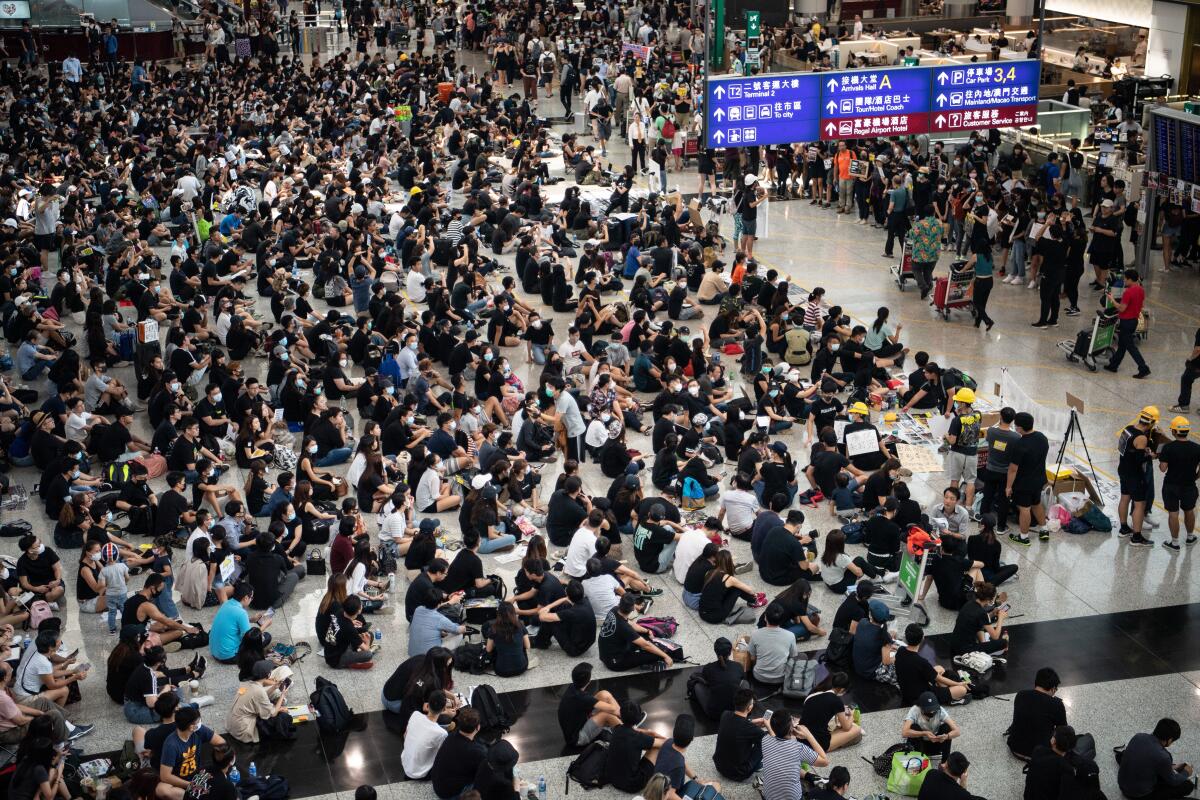
Beijing has ramped up rhetoric against protesters in recent weeks, saying Monday that they showed “signs of terrorism.” State-owned news channels have broadcast propaganda saying protesters are supported by foreign forces including the United States, and played videos of Chinese military and armed police gathering across the border in Shenzhen as a show of force. There is no evidence that U.S. intelligence is behind Hong Kong’s protests, though American diplomats and officials have met with protest leaders.
Trump seemed to allude to China’s claim in a tweet Tuesday, which he followed with another one saying that Beijing was moving troops into place.
Hong Kong’s chief executive, Carrie Lam, said Tuesday that protests were damaging Hong Kong’s economy and could drag the territory into an “abyss.”
United Nations human rights spokesman Rupert Colville, meanwhile, voiced concern Tuesday about the escalation of violence. The U.N. rights office had reviewed “credible evidence of law enforcement officials employing less-lethal weapons in ways that are prohibited by international norms and standards,” Colville told reporters in Geneva.
He said the office’s high commissioner, Michelle Bachelet, was calling for a “prompt, independent, impartial investigation” into allegations of police brutality, and urged the Hong Kong government to exercise restraint toward protesters.
Public opinion of China has soured badly, making the trade war a potentially hot-button campaign issue.
Cheers broke out among protesters when the suspension of check-in procedures was announced at 6 p.m.
In contrast to Monday, when thousands of protesters panicked and fled the airport, thinking police were on their way, Tuesday’s crowds mostly stayed put.
Some took a conciliatory approach to passengers, apologizing and trying to reunite travelers separated from their loved ones. Others continued to block already checked-in travelers from reaching their gates.
Edgar, 17, a protester who withheld his last name for protection, said the protesters’ moves to block passengers had been decided spontaneously as the sit-in evolved.
“We are afraid this could turn public opinion against us, but we are desperate and we are sorry,” he said. “I know some passengers were scared today, but we are scared every day we protest on the streets, of tear gas, rubber bullets and being beaten.
“We’re more afraid of what will happen to Hong Kong if we do nothing,” he said.
Later in the night, a mob of protesters swarmed around a man suspected to be a plainclothes policeman from mainland China, zip-tying his hands, shouting insults, kicking and threatening to kill him. A paramedic from the firefighting department reached the man, who collapsed several times, but the crowd refused to let the emergency worker extricate him.
“All consequences are at your own risk!” the protesters chanted, echoing the warning a People’s Liberation Army officer had uttered in an ominous propaganda video last month.
A small group of about two dozen police entered the airport at 11 p.m. to get the collapsed man out. Thousands of protesters met them with screams of “Gangsters! Gangsters!” and “Return her eye!”
As medics loaded the collapsed man on a stretcher, police quickly boarded vans to leave, but protesters surrounded one, pushing luggage trolleys in front of it and bashing at the windows.
Within minutes, new police wearing riot gear appeared and began to disperse the crowd, firing pepper spray and arresting several people. Protesters pushed trolleys and metal barriers against the terminal entrance as barricades.
As police left, the crowds surged around another man who’d been taking pictures with his cellphone, forcing him to sit on a trolley and zip-tying his ankles together and his wrists above his head. They pulled an “I ❤️ HK Police” T-shirt and mainland Chinese passport out of his bag, shouting that he was “fake press” and likely undercover police.
Jay, 21, a protester who did not give his last name, said they had surrounded the man because he was wearing a press vest but told protesters he was a tourist. The T-shirt looked like ones “gangsters” had worn while attacking citizens in previous clashes, he said.
“So we think he is very suspicious.”
The Global Times, a state-run Chinese tabloid, later confirmed that the man was Fu Guohao, one of its employees.
Several pro-democratic legislators tried to calm the crowds to no avail. Some protesters poured water on the mainlander’s head as others shined lasers in his eyes, screaming and dragging him into a fetal position on the ground before medics managed to evacuate him.
Times staff writer Su reported from Beijing and special correspondent Kilpatrick from Hong Kong.
More to Read
Sign up for Essential California
The most important California stories and recommendations in your inbox every morning.
You may occasionally receive promotional content from the Los Angeles Times.
